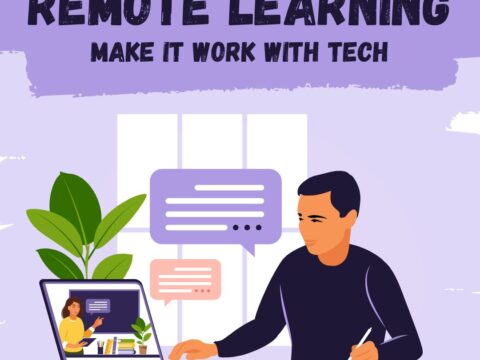If there is a trait above all others that I want to imbue into my students, it is curiosity. Let that include a passion to understand, connect the dots, and answer questions like, “Why?” The first step toward reaching that goal would be opening their minds to fascinating bits and pieces of knowledge, be they about computer games or nature. That Wow feeling is addictive, as is the high of connecting the dots, solving a puzzle, and unraveling the mysteries of life itself.
 I respect the job done by education programs around the world, but six to eight hours a day five days a week can only go so far. Teachers get tangled in a web of standards, mission statements, and assessments, and spend too much time on what their institution considers essential. While this is a good starting point, it has to often become an endpoint, something it was never intended to be. John Dewey, one of the most influential voices in American education in the early 1900’s, once said:
I respect the job done by education programs around the world, but six to eight hours a day five days a week can only go so far. Teachers get tangled in a web of standards, mission statements, and assessments, and spend too much time on what their institution considers essential. While this is a good starting point, it has to often become an endpoint, something it was never intended to be. John Dewey, one of the most influential voices in American education in the early 1900’s, once said:
Education is not preparation for life. Education is life.
What does that mean? Decades earlier than Dewey spoke those words, John Adams defined them:
“You will ever remember that all the End of study is to make you a good Man and a useful Citizen.”
Renowned linguist, philosopher, historian, and scientist, Noam Chomsky says it this way:
“Education is really aimed at helping students get to the point where they can learn on their own. . . ”
Rephrased, this defines education as not about academic success, learning the 3Rs or graduating top in the class. The goal is bigger, more far-reaching, and more difficult to achieve. It’s about building lifelong learners.
I remember Felicity. Even in first grade, she displayed a passion for understanding her world. At that age, it was “transportation vehicles” — cars, trains, trucks, and anything that got you from here to there. Reigning her enthusiasm in was painful for both of us but the grade-level body of knowledge the State expected her to learn didn’t leave a lot of time for digging deeply into her passion.
Felicity is one of my teacherly heroes because she got me rethinking what I learned in education classes and hoping there was a better way.
What is a lifelong learner?
 Lifelong learning is a better way. It is a daily cerebral adventure, fully as engaging as Star Wars, as challenging as The Matrix, and as gratifying as The Life of Pi. It has a lot of definitions by People Who Should Know but here’s one from the Department of Education that’s succinct and pithy:
Lifelong learning is a better way. It is a daily cerebral adventure, fully as engaging as Star Wars, as challenging as The Matrix, and as gratifying as The Life of Pi. It has a lot of definitions by People Who Should Know but here’s one from the Department of Education that’s succinct and pithy:
Lifelong learning is the ongoing, voluntary, and self-motivated pursuit of knowledge
You will notice they say nothing about school, teachers, test scores, or goals. The DoE describes learning for the love of learning, for personal reasons. The concept of lifelong learning recognizes that knowledge is not confined to a classroom but takes place throughout life and in a range of situations. Once students graduate from the traditional education system, there are several ways to learn more of what they want to know including:
- Adult education — the acquisition of formal qualifications or work and leisure skills when formal education ends
- Continuing education — often describes extension or not-for-credit courses offered by higher education institutions
- Knowledge work — includes professional development and on-the-job training
- Personal learning environments — aka, self-directed learning using a range of sources and tools
Why is this important?
As kids grow into adults, to the career that invariably follows formal education, they discover that their goal of living life well becomes less about achieving a particular job and resting on one’s laurels than accomplishing something they thought they couldn’t do or finding a passion that probably had nothing to do with their school learning. Life constantly changes. What used to be written in stone is now washed away by the tides of change. Many adults spend twelve-sixteen years reaching a goal only to find that someone moved the goalposts.
“I do not think much of a man who is not wiser today than he was yesterday.” — Abraham Lincoln
Turns out, that’s life. We can’t teach students everything they’ll ever need but what we can inspire them to be lifelong learners, to know how to figure something out when it slaps them in the face. That knowledge base they created, the one they expect to take care of them throughout their career as a worker, adult, and human being, doesn’t — unless what they learned was how to learn.
How do you create lifelong learners?
Lifelong learners extend education beyond the 45-minute class and the walls of the schoolhouse. For them, traditional school is the Petrie dish and what grows from it is a zest for knowledge. Here are nine good approaches to painlessly incorporating lifelong learning into your classroom:
No Deadlines
Take the stress out of teaching by removing deadlines. Don’t expect to complete a certain amount of material in a month or a week. Start the year by infecting students with the excitement of learning without deadlines, clocks, and rules. Do tell them the long-term goals but give them lots of leverage for achieving at their own pace, in their own way. A surprising thing happens. Students engage in the learning process, buttressed by your respect for their ability to learn and your faith that they will get there. They learn more because they have time to do just that and ancillary knowledge will find a home later, in a different unit of inquiry. Yes, it will be slower at first as students are distracted by lots of cerebral shinies, but over time, before the year ends, you’ll catch up and then move ahead. A thinking brain can’t be corralled.
That’s right — assign homework but link it to whatever you taught during the day. Make it an extension of what is learned not an assessment, a repeat, or dreaded rote drills. This could be using a virtual wall as part of a crowd-sourced learning experience or a collaborative spreadsheet to share what students remember from the classwork. The important part is that it takes learning out of the schoolhouse into the rest of life where it belongs. Students come to understand that learning can happen anywhere, at any time.
Encourage learning outside of class
This is a big picture item for lifelong learning. It happens anywhere, at any time. It could be the homework discussed above (under “Assign homework”). It could be virtual discussions, sharing ideas in a closed forum, or talking to parents about an academic concept. Whatever it is happens outside of class. Students begin to reframe their definition of where learning happens from “at school, in class” to “anywhere”.
Move exit tickets home
If you’re one of the many schools that have adopted exit ticks as integral to assessment, move the completion of those from “done as they leave class” to “done before they return to class”. Let students complete this three-five minute exercise on their own schedule, at their own pace, in their own way.
Change your attitude about learning
First: Act like learning is fun, cool, and exciting. Treat cerebral and geeky stuff as an adventure no less riveting than an online game or the latest SciFi movie. If a usual assignment is always a chore, change it. I’m thinking of worksheets, wordlists, and spelling homework. You can gamify all of those and then enjoy the praise of parents who tell you how much their kids love — and get out of — your class.
Second: Know your students’ life goals and tie learning into them. Decades ago, teachers understood that education was to supercharge adulthood. Somewhere along the line, it became about passing tests and graduation rates. Change that, starting in your class. Have students complete a survey at the beginning of the year about their aspirations and goals. Read them. Connect to them whenever possible. Want to be an MLB player? You need to understand math (fly balls and stuff). Want to be a savvy investor? That’s about graphs and charts, history and people.
Change your class environment
Encourage the joy of learning by giving students the time to answer questions that make them curious. That might be words they don’t understand or an idea that needs clarification. Provide the digital tools for defining words, finding synonyms, and researching on the fly. Let them get distracted while holding them accountable for all classroom material. How they do that is up to them. It might be learning with a partner or reviewing your taped lectures. Find the best way that works for your student learners and let them go.
Embrace Genius Hour
Make a trade-off with students. If they’ll spend 80% of class time engaged in what the school considers important, you’ll give them 20% of the time on what they think is important. That’s what Genius Hour is. Students pick a topic they’re passionate about, research it, and present the results to classmates. They learn skills like studying, notetaking, research, synthesis, presentation, literacy, and a host of others. They also learn an important truth: Learning is fun.
On-the-fly Research
Take time in classes to 1) teach students how to research on the fly, and 2) allow them to do it. Sure, every librarian in every school teaches kids how to look up materials, provide citations, take notes, and distill a report. That’s not what I mean. Teach students how to find the answer to quick questions like, “What’s the capital of Nigeria?” or “How many states are in Mexico?” These are ten-second Q&As when done with a research tool readily available and a basic knowledge of on-the-fly research. When students are curious in your classes, give them twenty seconds to find an answer and share it with the class. They’ll feel that genius burn that comes only with doing the impossible.
“Being a nerd really pays off sometimes.” — Ken Jennings
Be a role model
 When you get curious in the middle of a lesson plan, show students how you stop and research or read a book on the subject or watch a video — just because you’re curious. Let them see your eyes light up when you learn something unexpected. I’ll never forget the excitement when I found out that the chemical formula for photosynthesis and chlorophyll differed only by one molecule (the former has iron and the latter has magnesium), I told everyone I could think of about it. Be that person with a zest for knowledge, a zeitgeist for living, an optimism about every challenge you face, and a fearlessness about living outside of your comfort zone. You are that role model.
When you get curious in the middle of a lesson plan, show students how you stop and research or read a book on the subject or watch a video — just because you’re curious. Let them see your eyes light up when you learn something unexpected. I’ll never forget the excitement when I found out that the chemical formula for photosynthesis and chlorophyll differed only by one molecule (the former has iron and the latter has magnesium), I told everyone I could think of about it. Be that person with a zest for knowledge, a zeitgeist for living, an optimism about every challenge you face, and a fearlessness about living outside of your comfort zone. You are that role model.
***
There you have it, nine ways to turn any student into a lifelong learner. All of these start with you. Embrace what for some is a platitude but for others is so much more:
We are all learners.
Questions about this? Wonder about details? Leave a comment or email me at [email protected]
–published first on TeachHUB
Jacqui Murray has been teaching K-18 technology for 30 years. She is the editor/author of over a hundred tech ed resources including a K-12 technology curriculum, K-8 keyboard curriculum, K-8 Digital Citizenship curriculum. She is an adjunct professor in tech ed, Master Teacher, webmaster for four blogs, an Amazon Vine Voice, CSTA presentation reviewer, freelance journalist on tech ed topics, contributor to NEA Today, and author of the tech thrillers, To Hunt a Sub and Twenty-four Days. You can find her resources at Structured Learning.





































2 thoughts on “How to Build Lifelong Learners”
Comments are closed.